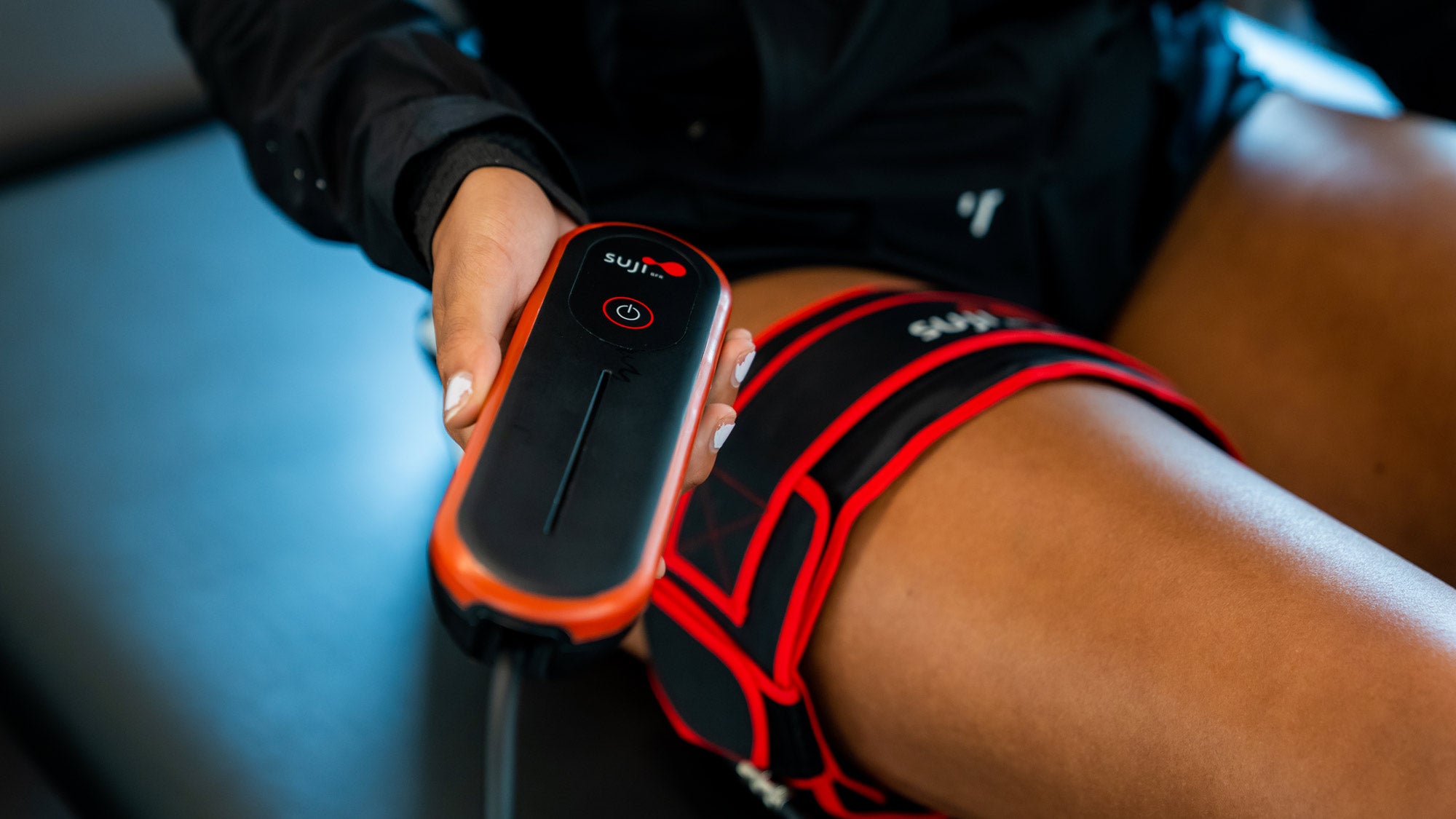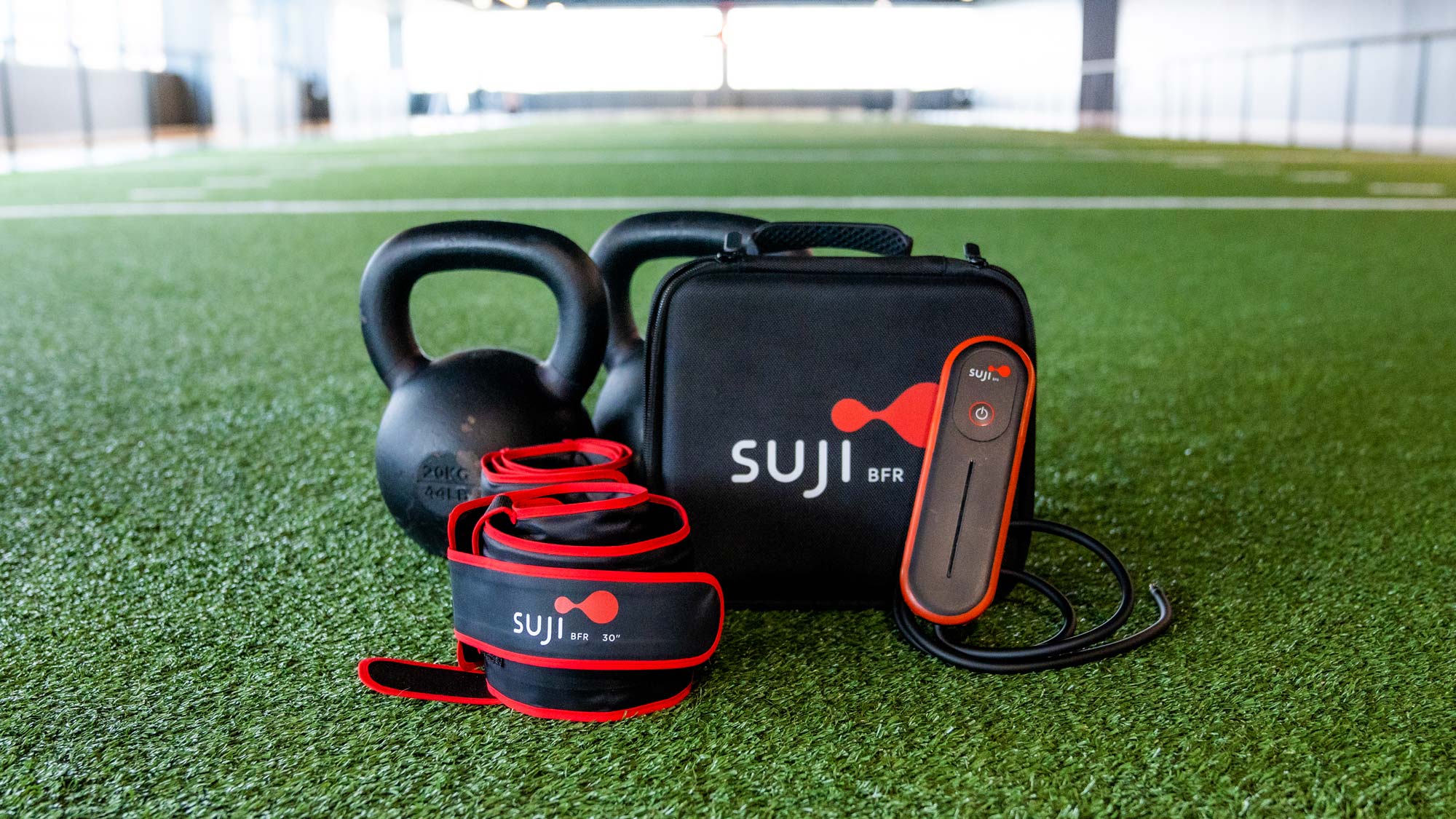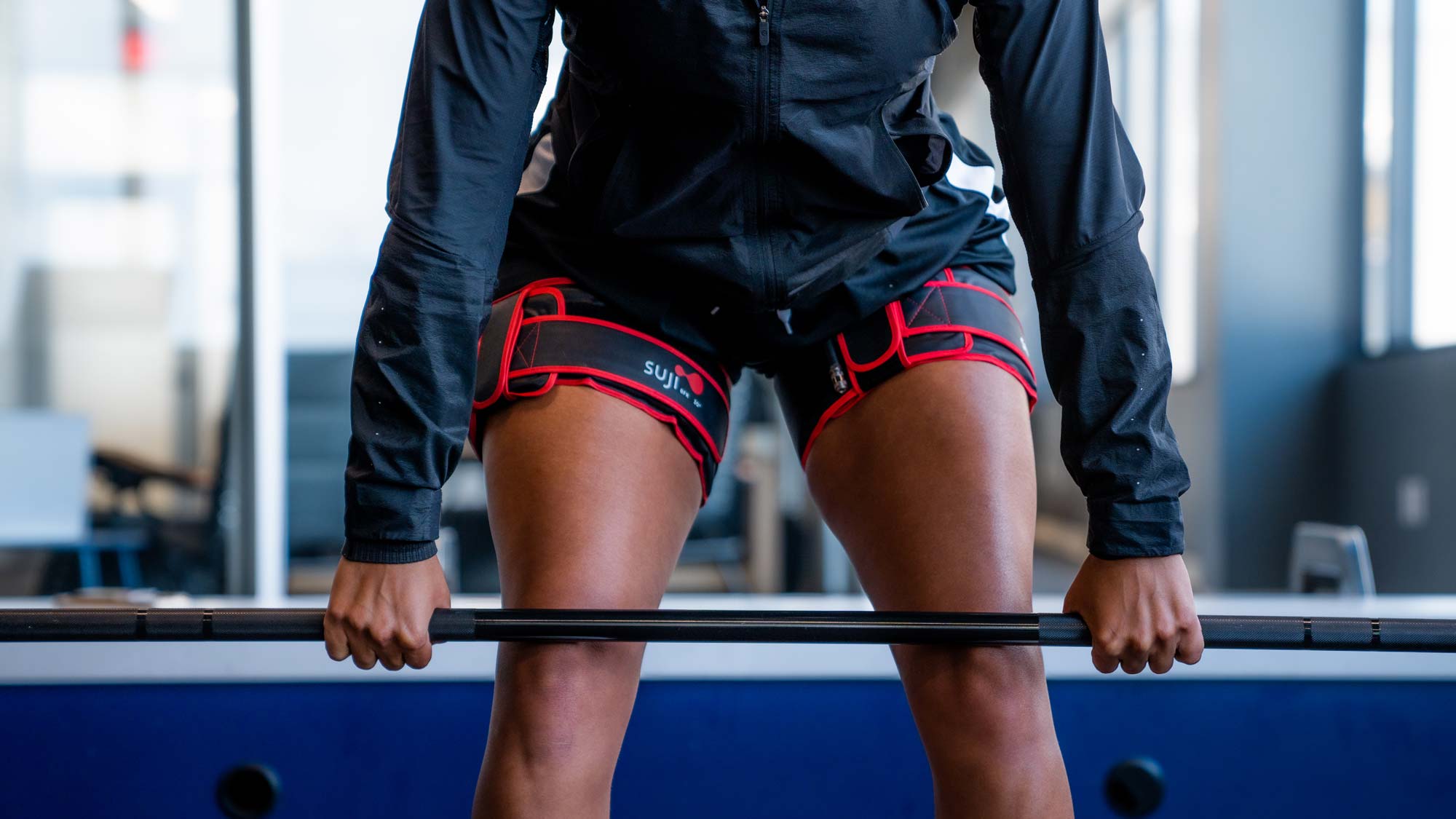Blood flow restriction training (BFR) has recently gained popularity as a method for increasing muscle mass and strength using resistance training loads as low as 20% 1RM (
What is blood flow restriction training?). Traditional resistance exercise methods demand loads greater than 70% 1RM be used in order to trigger a muscle hypertrophy response, making BFR an appealing alternative. Adaptations to resistance training are typically localised to the working muscle, however less pronounced gains in strength are also observed in the contralateral (opposite) limb due to a phenomenon known as
cross-education. This concept dictates that if you train one side of your body, the other side has the potential to get stronger. These strength gains are attributed to changes in the central and peripheral nervous system, resulting in a more co-ordinated movement pattern on both sides of the body. Further still, there is some evidence to support the concept of a
remote-transfer effect, which suggests that if you train one part of your body, for example your legs, the strength gains you can achieve in another part of your body, your arms, may be amplified. The remote-transfer effect is thought to be driven by changes in hormones that circulate within your bloodstream and have the potential to impact all areas of your body. BFR training causes an increase in both neural drive and circulating muscle growth hormones (
BFR training and muscle growth), making it plausible that the benefits of BFR training are not necessarily confined to the muscles directly beneath the cuff.

BFR training involves training with a pneumatic cuff device that partially restricts blood flow to the working muscle.
The majority of research surrounding the use of BFR training has targeted the muscles directly beneath the cuff. For example, the application of BFR cuffs to the most proximal part of the thigh has consistently been shown to increase quadriceps muscle mass and strength when training the lower limb. However, as we learn more about BFR, we discover that the benefits of this form of training may be pertinent to other areas of the body.
Above the cuff:
Recent research from Eric Bowman has demonstrated an increase in muscle strength and endurance capacity in muscles located above the cuff in both the lower (2019) and upper (2020) limb. In the lower limb this research demonstrated increase in muscle strength in hip extension and abduction with the cuff placement at the top of the thigh. In the upper limb BFR training caused an increase in muscle strength in shoulder flexion, abduction, and internal and external rotation. While there is mixed evidence regarding the effects of BFR training in muscles proximal to the cuff, these findings have considerable implications for the use of BFR in clinical populations. The potential to increase muscle strength above the cuff would benefit post-operative hip and shoulder pathologies, and suggest that the benefits of BFR training is not localized to the extremities where BFR can be directly applied.
Below the cuff:
When considering muscles below the cuff, we are referring to those muscles that lie at least one joint away from the site of the cuff. For example, when training the lower limb, the cuff is typically applied to the most proximal part of the thigh. The muscles below the cuff would be those that function about the ankle, most prominently the calf muscles. There is considerable research supporting the use of BFR training in muscles distal to the cuff placement. A recent case study by Yow et al (2018) demonstrated the effectiveness of BFR training in two post-Achilles tendon rupture patients in regaining calf strength and endurance capacity. These findings were supported by Centner et al (2019) who was able to show the calf strength training combined with BFR was able to cause structural changes in the Achilles tendon similar to what is typically observed with high intensity exercise. In the upper limb, blood flow restriction training has been shown to be more effective than traditional resistance training methods in developing hand grip strength (Fernandes et al 2020).
Remote transfer and Cross-education:
The concept of using BFR training to target remote transfer improvements in strength was first explored by Madarame et al (2008). This study compared two groups, both of whom completed upper and lower limb based resistance exercise. The experimental group applied BFR cuffs to the lower limb. Their findings demonstrated an increase in muscle mass and isometric strength in the muscles of the forearm, only when combined with BFR resistance exercise for the leg muscles. While the underlying mechanisms explaining the remote transfer effect requires further examination, these initial findings have since been supported by May et al (2018). The potential for a cross-education effect of BFR was first explored by Bowman et al (2019). Within this research two groups completed unilaterally loaded resistance exercise in both limbs, with the experimental group having blood flow to one of their limbs occluded with a BFR cuff. These finding demonstrated a superior strength and hypertrophy response in the occluded limb when compared to the exercise-matched control group. However they also found a greater increase in muscle mass and muscle strength in the non-occluded limb within the experimental group, when compared to the control. These findings were since replicated in a comparable study in the upper limb (Bowman et al 2020).
Final word:
The clinical uses for BFR training are continuing to be discovered. BFR training has the capacity to influence muscle strength above and below the cuff, as well the potential to trigger a cross-education and remote transfer effect. Although direct application of blood flow restriction is limited to the extremities, the training benefits are potentially applicable to all areas of the body. These increases in strength are likely driven by changes in circulating systemic hormones and neuromuscular adaptations.
References:
- Bowman, E. N., et al., Proximal, Distal, and Contralateral Effects of Blood Flow Restriction Training on the Lower Extremities: A Randomized Controlled Trial. Sports Health, 2020. 11 (2): p. 149-156. https://pubmed.ncbi.nlm.nih.gov/30638439/.
- Bowman, E. N., et al., Upper-extremity blood flow restriction: the proximal, distal and contralateral effects - a randomized controlled trial. Journal of Shoulder and Elbow Surgery, 2019. 29: p. 1267-1274. https://pubmed.ncbi.nlm.nih.gov/32423577/.
- Yow, B. G., et al., Blood Flow Restriction Training After Achilles Tendon Rupture. The Journal of Foot & Ankle Surgery, 2018. 57: p. 635-638. https://pubmed.ncbi.nlm.nih.gov/29477554/.
- Centner, C., et al., Low-load blood flow restriction training induces similar morphological and mechanical Achilles tendon adaptations compared with high-load resistance training. Journal of Applied Physiology, 2019. 127: p. 1660-1667. https://pubmed.ncbi.nlm.nih.gov/31725362/.
- Fernandes, D. Z., et al., Effects of blood flow restriction training on handgrip strength and muscular volume of young women. International Journal of Sports Physical Therapy, 2020. 15 (6): p. 901-909.
- Madarame, H., et al., Cross-Transfer Effects of Resistance Training with Blood Flow Restriction. Medicine and Science in Sport and Exercise, 2008. p. 258-263. https://pubmed.ncbi.nlm.nih.gov/18202577/.
- May, A. K., et al., Lower body blood flow restriction training may induce remote muscle strength adaptations in an active unrestricted arm. European Journal of Applied Physiology, 2018. 118: p. 617-627. https://pubmed.ncbi.nlm.nih.gov/29350278/.
 BFR training involves training with a pneumatic cuff device that partially restricts blood flow to the working muscle.
BFR training involves training with a pneumatic cuff device that partially restricts blood flow to the working muscle.



Leave a comment
This site is protected by hCaptcha and the hCaptcha Privacy Policy and Terms of Service apply.